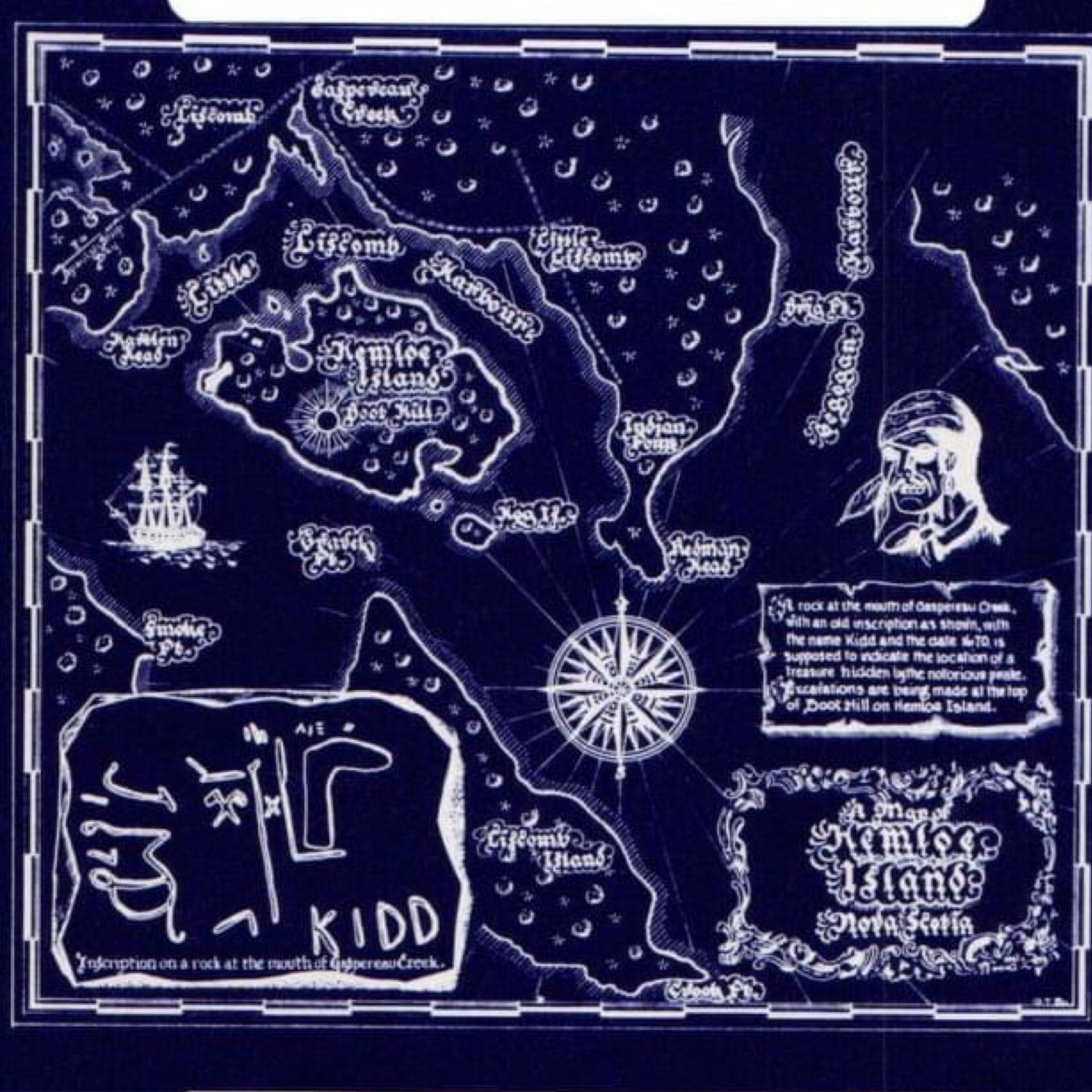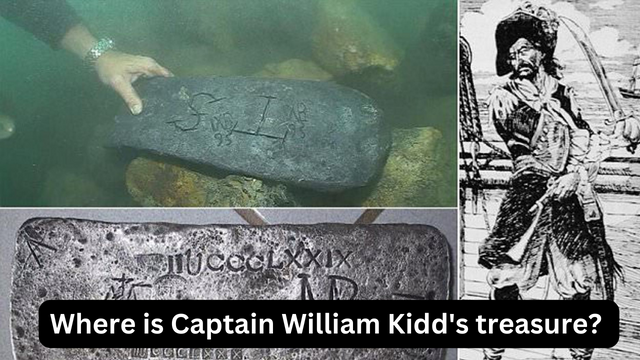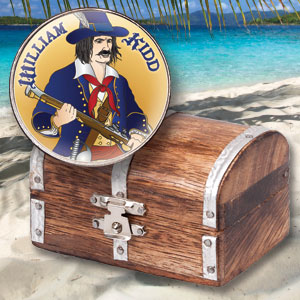
The Enduring Enigma of Captain Kidd’s Treasure: Myth, History, and the Unyielding Hunt
The name Captain William Kidd conjures images of buried chests, cryptic maps, and swashbuckling adventure – the very archetype of the pirate with a hidden fortune. For over three centuries, his legendary treasure has fueled countless searches, inspired literature, and captivated the public imagination, transforming a pragmatic 17th-century privateer into an enduring symbol of maritime mystery. Yet, beneath the romanticized veneer of myth lies a complex historical narrative, where political intrigue, legal battles, and the harsh realities of seafaring life paint a picture far richer, and perhaps more tragic, than the popular legend suggests.
Born in Greenock, Scotland, around 1645, William Kidd began his maritime career as a respected privateer, operating with official commissions from the British Crown. In an era where the lines between privateering (state-sanctioned piracy against enemy ships) and outright piracy were often blurred, Kidd earned a reputation for competence and bravery, particularly in the Caribbean and along the North American coast. His fortunes seemed to turn definitively in 1696 when he was commissioned by the powerful Earl of Bellomont, Governor of New York, Massachusetts, and New Hampshire, along with a consortium of wealthy English nobles. His mission was clear: hunt down French privateers and notorious pirates preying on East India Company ships in the Indian Ocean. He was given a formidable vessel, the Adventure Galley, armed with 34 guns and a crew of 150 men.
This commission, however, would prove to be Kidd’s undoing. The voyage was plagued by ill-fortune from the start. Recruitment was difficult, the crew mutinous, and the hunt for legitimate pirate prey largely unsuccessful. With dwindling supplies and a restless, unpaid crew, Kidd found himself under immense pressure. It was during this period, in the waters off Madagascar, that the fateful transformation occurred. Driven by desperation, or perhaps coerced by his rebellious crew, Kidd began to attack ships not sanctioned by his commission. The most significant of these captures was the Quedagh Merchant, a large Armenian vessel sailing under French passes but reportedly carrying a valuable cargo and under the command of an English captain. This act, whether an act of convenience, desperation, or outright piracy, sealed Kidd’s fate.

News of Kidd’s depredations eventually reached England, where the political winds had shifted dramatically. The influential figures who had sponsored his voyage were now under scrutiny for their alleged connections to piracy. To distance themselves, they denounced Kidd, effectively turning him into a scapegoat. Unaware of the warrant for his arrest, Kidd sailed back to the Americas in 1699, hoping to clear his name and use the captured goods from the Quedagh Merchant as proof of his success against legitimate targets.
It is at this point that the legend of the "buried treasure" truly begins to take shape. Knowing he was returning to a hostile reception, Kidd made a stop at Gardiner’s Island, off the coast of Long Island. Here, he entrusted a portion of his most valuable plunder – including gold dust, silver ingots, jewels, and bolts of precious cloth – to John Gardiner, the island’s proprietor, for safekeeping. This act, well-documented through Gardiner’s own testimony, represents the only historically confirmed instance of Captain Kidd burying treasure. The items were later recovered by Bellomont’s agents and used as evidence against Kidd. This was not a vast fortune of gold doubloons meant for future retrieval, but rather a strategic deposit intended as a bargaining chip or a means to secure his defense.
Upon his arrival in Boston, Kidd was arrested, imprisoned, and eventually transported to London in chains to stand trial. His trial in May 1701 was a travesty of justice, heavily influenced by political maneuvering. Denied legal counsel, his pleas of innocence and claims that he had acted against legitimate French-pass ships or under duress from his crew were ignored. Crucially, evidence that might have exonerated him, including the French passes from the Quedagh Merchant, mysteriously disappeared or was suppressed. He was found guilty of piracy and the murder of his gunner, William Moore (whom Kidd had killed with a bucket during a heated argument).
On May 23, 1701, Captain William Kidd was hanged at Execution Dock in Wapping, London. His execution was not without its own macabre drama; the rope broke on the first attempt, forcing a second hanging. His body was then publicly displayed in an iron cage over the River Thames as a grim warning to other pirates. Thus ended the life of William Kidd, a man caught between the shifting loyalties of a tumultuous era, transformed from a respected privateer into a condemned pirate, and ultimately, into a legend.
The legend of Kidd’s treasure, however, was just beginning. The fact that the bulk of his actual wealth, particularly from the Quedagh Merchant, was never fully accounted for by the authorities, and that his patrons had seized much of it, fueled public speculation. The notion of a vast, still-undiscovered hoard captured the imagination. Ballads and folk tales embellished his story, depicting him as a cunning pirate who had secreted away unimaginable riches in countless hidden locations. The very ambiguity surrounding his final disposition of goods, combined with the sensational nature of his trial and execution, created fertile ground for the myth to flourish.
This myth was further cemented in popular culture. While Robert Louis Stevenson’s Treasure Island (1883) drew inspiration from many pirate legends, the figure of Captain Kidd, with his rumored buried treasure, undoubtedly contributed to the enduring trope of the treasure map and the X-marks-the-spot. Generations of treasure hunters, both amateur and professional, have since scoured coastlines, islands, and ancient maps, convinced that Kidd’s elusive fortune awaits discovery. From Nova Scotia to the Caribbean, from Madagascar to the remote islands of the Indian Ocean, sites purportedly linked to Kidd’s treasure have been dug up, scanned, and explored, often with nothing more than wishful thinking to guide them.
In recent years, the allure of Kidd’s treasure has continued to drive modern archaeological efforts, often blending scientific rigor with the ever-present hope of a sensational find. One of the most publicized events occurred in 2015, when a team led by underwater explorer Barry Clifford announced the discovery of a 50-kilogram silver bar off the coast of Madagascar, proclaiming it to be from Captain Kidd’s Adventure Galley. The discovery ignited a media frenzy, seemingly confirming the existence of Kidd’s hidden wealth. However, the UNESCO experts who later examined the artifact quickly debunked the claim. They determined the bar was merely a piece of lead ballast, likely of local origin and not associated with Kidd’s ship. This incident served as a stark reminder of how easily the desire for discovery can overshadow scientific evidence, and how potent the Kidd legend remains.
Yet, despite the enduring myths and the occasional false alarms, genuine archaeological discoveries have shed light on Kidd’s story, albeit not in the way treasure hunters might hope. In 2007, a team of archaeologists located the wreck of the Quedagh Merchant off the coast of Catalina Island in the Dominican Republic. This discovery was not about finding chests of gold, but about uncovering the historical truth of a significant ship involved in Kidd’s tumultuous career. The wreck, remarkably well-preserved, offers invaluable insights into 17th-century shipbuilding, trade routes, and the realities of maritime life. It represents a different kind of treasure – one of historical knowledge and archaeological understanding, far more significant to historians than a pile of gold coins.

The legacy of Captain Kidd’s treasure is therefore a dual one. On one hand, it is a testament to the enduring power of myth, a romanticized narrative that continues to inspire adventure and fuel the human desire for sudden wealth. On the other, it is a poignant reminder of a complex historical figure, a privateer caught in the political crosscurrents of his time, whose life ended tragically. The real "treasure" associated with Captain Kidd today is not a hidden chest of jewels but the rich historical tapestry of his life, the intricacies of 17th-century maritime law, and the fascinating interplay between historical fact and popular imagination. The enduring hunt for his fortune may never yield a pirate’s hoard, but it consistently unearths something far more valuable: a deeper understanding of our past and the stories that continue to shape our present. The enigma of Captain Kidd’s treasure, it seems, is less about what lies buried, and more about what lies within us – an unyielding fascination with the unknown, the adventurous, and the perpetually elusive.


